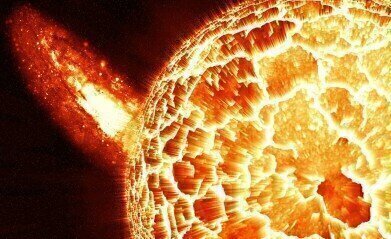News & Views
Nobel 2017: A Brief Introduction to Gravitational Wave Detection
Oct 23 2017
Every year, a collective of Swedish and Norwegian institutions bestow Nobel Prizes on individuals who pioneer exceptional academic, cultural or scientific advances. In 2017, a trio of scientists have been awarded top honours for their success in developing a gravitational wave detection technique.
Together, Rainer Weiss, Kip Thorne and Barry Barish won the Nobel Prize in Physics for their keynote roles in the developing the Laser Interferometer Gravitational Wave Observatory, or LIGO experiment.
The art of detecting "space ripples"
So what exactly is gravitational wave detection? Basically, it's the ability to pinpoint subtle cosmic vibrations triggered by black holes. LIGO itself is a feat of engineering, consisting of two huge L-shaped detectors. Each is equipped with a pair of 4-kilometer-long arms that that reflect laser light back and forth between mirrors. One detector spans across Hanford, an arid region in Washington State. The other is over 3000 kilometres away, located in a vast pine forest in Louisiana.
Cross country signals
Gravitational waves are detected by splitting a laser beam in two, then sending light down each arm. This light reflects back and forth between the mirrors before being recombined and are sent to a detector. If the arms are the same length the light beams cancel each other out. While passing trucks can trigger a reaction, gravitational waves produce simultaneous signals in the two distant detectors.
“LIGO is probably one of the best and most amazing instruments ever built by mankind,” gushes Barish.
Einstein continues to prove his genius
While the technique is new, the observation of gravitational waves confirms Einstein’s century year old general theory of relativity. He suggested that the rapid acceleration of massive objects actively stretch and squeeze spacetime to create ripples that beam out from the source.
In February 2016 LIGO scientists revealed that they had detected gravitational waves created by a pair of merging black holes 1.3 billion light-years away. The discovery garnered a frenzy of excitement from the scientific community, and captured headlines across the globe.
“If Einstein was still alive, it would be absolutely wonderful to go to him and tell him about the discovery. He would be very pleased, I’m sure of it,” said Weiss.
Quick recognition for LIGO masterminds
While scientists often wait decades for recognition from the Nobel Prize panel, this team of LIGO masterminds was crowned less than two years after announcing the ground-breaking discovery.
“These detections were so compelling and earth shattering…. Why wait?” commends Clifford Will of the University of Florida in Gainesville.
Universities play a critical role in pioneering scientific advances like LIGO. The University of Nottingham is taking this concept to heart, with community centric open days designed to "amaze and inspire curious minds." For detailed coverage of the event don't miss 'Wide Eyed with Wonder: University of Nottingham Open their Doors to the Community.'
Digital Edition
Lab Asia 31.2 April 2024
April 2024
In This Edition Chromatography Articles - Approaches to troubleshooting an SPE method for the analysis of oligonucleotides (pt i) - High-precision liquid flow processes demand full fluidic c...
View all digital editions
Events
Apr 22 2024 Marrakech, Morroco
Making Pharmaceuticals Exhibition & Conference
Apr 23 2024 Coventry, UK
Apr 23 2024 Kintex, South Korea
Apr 23 2024 Seoul, South Korea
Apr 24 2024 Jakarta, Indonesia








.jpg)









